I described Istanbul’s beautiful Blue Mosque and Hagia Sophia in the last article. In this Part 2 post, I continue with the last three not-to-be-missed top Istanbul sights (in the historic old city) on my “Big 5” List: the Basilica Cistern, Grand Bazaar, and Spice Market.
Basilica Cistern
The Basilica Cistern, Istanbul’s largest surviving cistern, is one of the city’s “hidden” gems. The subterranean cistern was built in the 6th century to store water for the fast growing city of Constantinople. Over 300 marble columns (30 feet high!) support the brick ceiling, giving it the appearance of an “underground rain forest of pillars” (my Lonely Planet guidebook’s clever and most apt description.)
The Cistern, with a 27 million-gallon capacity, covers an area about the size of two football fields. Water once filled this massive space half way to the ceiling but now it is a shallow pond with a few resident fish (carp). Be sure to visit the two very cool stone carved Medusa heads in the back corner. They were “recycled” from the ruins of an earlier Roman building and serve as a most ornate base of a column.
I loved walking the cistern’s wooden pathways amidst the tall columns in the dim but beautifully lit, magical light, reflecting off the water. Luckily, the walkways had strong railings to help keep me and other distracted visitors from falling into the several-feet-deep water. The railings were also useful for bracing cameras in the very low light for sharing this unforgettable sight with family and friends!
- Basilica Cistern entrance
- Medusa head
Grand Bazaar (Kapili Carsi)
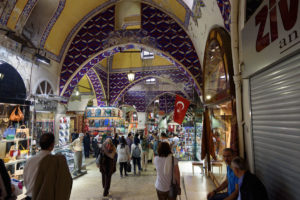
However, it’s still a wonderful place to spend a few hours. The main street is packed with people, but the myriad side streets thin out a bit, so you can really enjoy the best in Turkish window shopping with every imaginable offering – such as hand-painted ceramics, carpets, embroideries, antiques, spices and leather goods.
I particularly liked the “hans” – old commercial centers built around a central open air courtyard. Each han specialized in a particular trade like silversmithing. We visited the Kizlaragasi Han, which houses middlemen who recycle secondhand gold & silver. There, while peeking into a workshop door, we were motioned inside by Ayhan Usta, a master goldsmith.
Even though he speaks only Turkish, Ayhan showed us his current project and how he melts gold in a metal cup over the fire, then pours it into a trough and eventually takes a piece of flattened gold and runs it through the press. Upon seeing the Rick Steves’ Istanbul guidebook in my hand, Ayhan’s eyes lit up and he proudly pointed to his photo with Rick in the book! After sharing some laughter and kudos, we took some photos with Ayhan the Master so we could remember this – my favorite moment – from the Grand Bazaar.
Spice Market
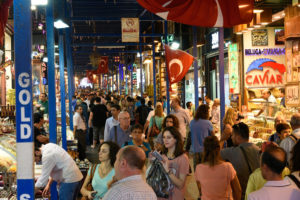

I did restrain myself, only buying a few pieces of Turkish Delight and wonderful pistachio-stuffed baklava from the Gulluoglu Baklava store for my night time sweet cravings. Before this trip to Turkey, I wasn’t a big fan of baklava, but I am now a convert. Also, having stupidly forgotten to bring a headscarf with me for the mosque visits, I was able to buy a pretty cotton scarf here in the market for only 10 Turkish lira (around $3 USD).
My favorite stop was at the guidebook-recommended Kalmaz Baharat, one of the few remaining shops that still sells exotic spices of the past. I met Adnan, head of the family-owned business (passed down by his father), and his delightful son-in-law who helped me with my big purchase – a jar of “sultan’s paste” (dubbed Turkish Viagra) as a gag gift for a female friend’s 60th birthday. Comprised of 41 herbs and exotic spices, it allegedly helped the sultan perform… ahem… his harem “duties!” They told me it’s also an all-purpose energy and immune booster so I bought one jar for myself – for the latter reason. Really, truly….
- Kalmaz Baharat spice shop
- My jar of Sultan’s Paste
- Colorful dried fruits
Click to read Part 1 of Discover the “Big 5” of Istanbul’s Historic Old City
Comments: Have you visited Istanbul’s Grand Bazaar or Spice Market? What did you buy? If not yet, what would be on your list of special purchases?










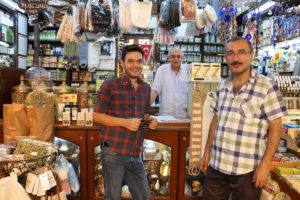
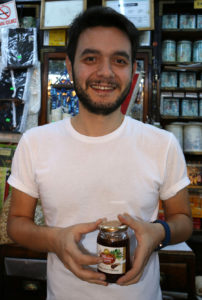




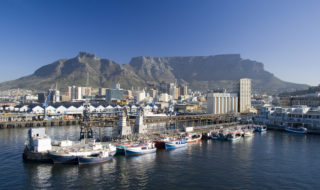
Post a Comment